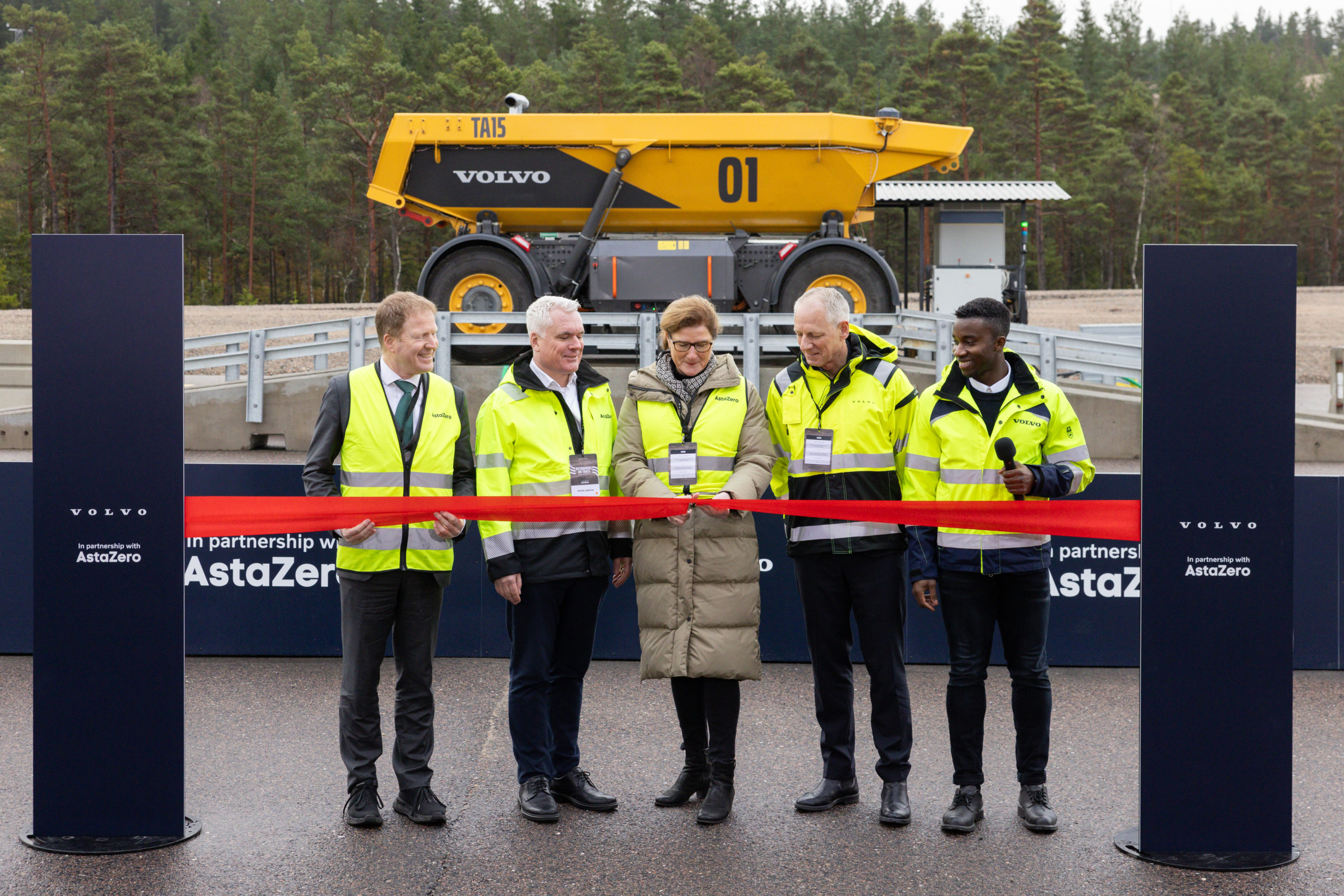Sign up for daily news updates from CleanTechnica on email. Or follow us on Google News!
Just when you thought the EV news cycle was slowing down, here comes the Chinese startup IM Motors with news of a new EV sporting a production-ready solid-state battery, ready to roll off the assembly line. Meanwhile Robert Zeng, founder and chairman of the leading Chinese EV battery firm CATL, claps back with his thoughts about the state of solid-state technology. Hold on to your hats…
Robert Zeng: Solid-State Battery Technology Is Coming, Eventually
CleanTechnica has heard much talk of solid-state EV battery technology over the years, the idea being that today’s conventional liquid-electrolyte EV batteries are due for a makeover. A battery with a solid electrolyte is trickier to formulate, but the payoff is faster charging, longer range, and improved safety.
Other benefits can include a supply chain with fewer (or no) hazardous materials, and improved efficiencies in end-of-life handling (see lots more CleanTechnica solid-state coverage here).
As one of the world’s leading EV battery innovators, CATL (short for Contemporary Amperex Technology Co., Limited) is a regular feature here at CleanTechnica. However, unless there’s something we don’t know about, the company has no plans to introduce a solid-state battery any time soon. Two years ago, the company advised that a solid-state EV battery would not be ready for prime time until 2035, or perhaps later.
That doesn’t mean CATL is standing still in terms of EV battery improvements. Semi-solid technology is already on the table, for example. Last week, CleanTechnica editor Zach Shahan also observed that CATL is working with the battery-swapping firm NIO on increasing the lifespan of a swappable EV battery.
“Of course, everyone and their brother is working on solid-state batteries,” Shahan concluded.
That may be so, but Robert Zeng lit the Intertubes on fire earlier this week, after Financial Times reported that “China’s ‘battery king’ dismisses EV battery commercialisation as years away” — meaning Zeng, of course.
That’s the headline. The story is behind a paywall, though you can find excerpts through other sources. The gist of it is that Zeng anticipates a true solid-state EV battery eventually, but for now a “condensed matter” semi-solid chemistry — such as the one launched by CATL last year — represents a significant improvement in the field.
 Chip in a few dollars a month to help support independent cleantech coverage that helps to accelerate the cleantech revolution!
Chip in a few dollars a month to help support independent cleantech coverage that helps to accelerate the cleantech revolution!
IM Motors: We Too Are Launching A Production-Ready Solid-State EV Battery!
That brings us to IM Motors. The company was founded in 2020 as the A-list brand of China’s state-owned SAIC, which also holds the MG nameplate in its roster.
Just one year later, in 2021, IM Motors launched its L7 electric car into orbit at Auto Shanghai, billing it as a “new trend of intelligent electric luxury vehicles.”
There was nothing in the press kit about a solid-state battery, but there were plenty of bells and whistles.
“As IM Motors’ flagship car model for leading advanced intelligent vehicles, the L7 operates on the baseline logic of ‘data determining experience, while software defining vehicles’ in the era of AI,” the company explained.
“A newly constructed intelligent driving system, stunning supercar performance, an exceptional customized driver’s seat and 5G social media abilities, are all some of the properties that make this intelligent car luxurious. They completely redefine the expectations of a car in the ‘Intelligent Era,’” they added.
The solid-state battery finally popped up in February of this year, when Motor Authority reporter Viknesh Vijayenthiran reported the debut of the L6 compact sedan.
“Chinese auto giant SAIC used this week’s 2024 Geneva auto show to debut the L6 compact sedan, the latest model from its newly established brand IM,” Vijayenthiran wrote.
“IM was short on details for the L6 but said at least one version will deliver 0-62 mph acceleration in less than three seconds,” Vijayenthiran added. “There will be a standard lithium-ion battery and an available solid-state battery.”
Citing a company spokesperson, Vijayenthiran also reported that both batteries are “anticipated to be available at the 2025 launch.”
Ummm… About That Production-Ready Solid-State Battery…
That sounds pretty definitive, but the devil may be in the details. Earlier this week, Car News China was among those reporting that those details will not be available for another week or so.
“IM Motors claim that the L6, due to launch in May, will come with the industry’s first mass-produced ultra-fast charging solid state battery,” Car News China reporter Mark Andrews reported on March 25. “More details will be announced at the IM L6 Technology Conference on April 8 but we already know that the new battery will be 130 kWh.”
“The cathode (positive electrode) is coated with ultra-high nickel material with the anode (negative) being a new generation of high-specific energy composite silicon carbon material,” Andrews observed, with a “patented self-developed nano-scale” electrolyte to complete the picture.
“Furthermore, the electrolyte uses dry solid layer integrated molding with the resultant battery having reduced internal resistance meaning ultra-fast charging is possible,” he added.
Car News China added a cautionary note to the article, in which an unattributed editor stated: “We will obviously have to wait until April 8 for more details but the fact that there is currently no MIIT listing for a variant of the IM L6 equipped with the battery may indicate production is still some time off.”
“IM claim that the solid state battery is meant to have a high energy density but the key will be how heavy the battery actually is given that at 130 kWh the capacity is quite high. Success is also dependent on how much it will cost to produce the battery and whether the car can be sold at a price which makes it worthwhile to purchase,” the editor continued.
The Semi-Solid Solution
Interesting! Semi-solid state batteries can be accommodated by existing EV battery manufacturing lines, which is one reason why auto industry observers are coalescing around the view that semi-solid technology is readier to roll than solid-state technology.
The Israeli EV battery startup StoreDot is among those pitching semi-solid technology. Back in 2022, StoreDot CTO Daniel Aronov posted a long-form article explaining the company’s decision to focus on semi-solid technology for ultra-fast charging here and now, with all-solid state batteries somewhere off in the future.
“The solution lies in the combination of the benefits of solid state electrolyte (such as catholyte and anolyte), while maintaining a small liquid or gel form of electrolyte that allows for a better flow of the ions between the cathode and anode, and mitigates the critical issue of solid-to-solid interface that otherwise holds too high of resistance,” he concluded.
Still, hope springs eternal, and new developments are cropping up practically by the minute. In the latest news, the EU’s multi-agency project HELENA reached a milestone for its new solid-state EV battery sporting a halide electrolyte with a lithium metal anode and a nickel-manganese-cobalt cathode.
Follow me @tinamcasey on Bluesky, Threads, Post, and LinkedIn.
Image: The automotive press reports that IM Motors has promised a production-ready solid-state EV battery, with more details forthcoming on April 8 (courtesy of IM Motors via prnewswire.com).
Have a tip for CleanTechnica? Want to advertise? Want to suggest a guest for our CleanTech Talk podcast? Contact us here.
Latest CleanTechnica TV Video
CleanTechnica uses affiliate links. See our policy here.





